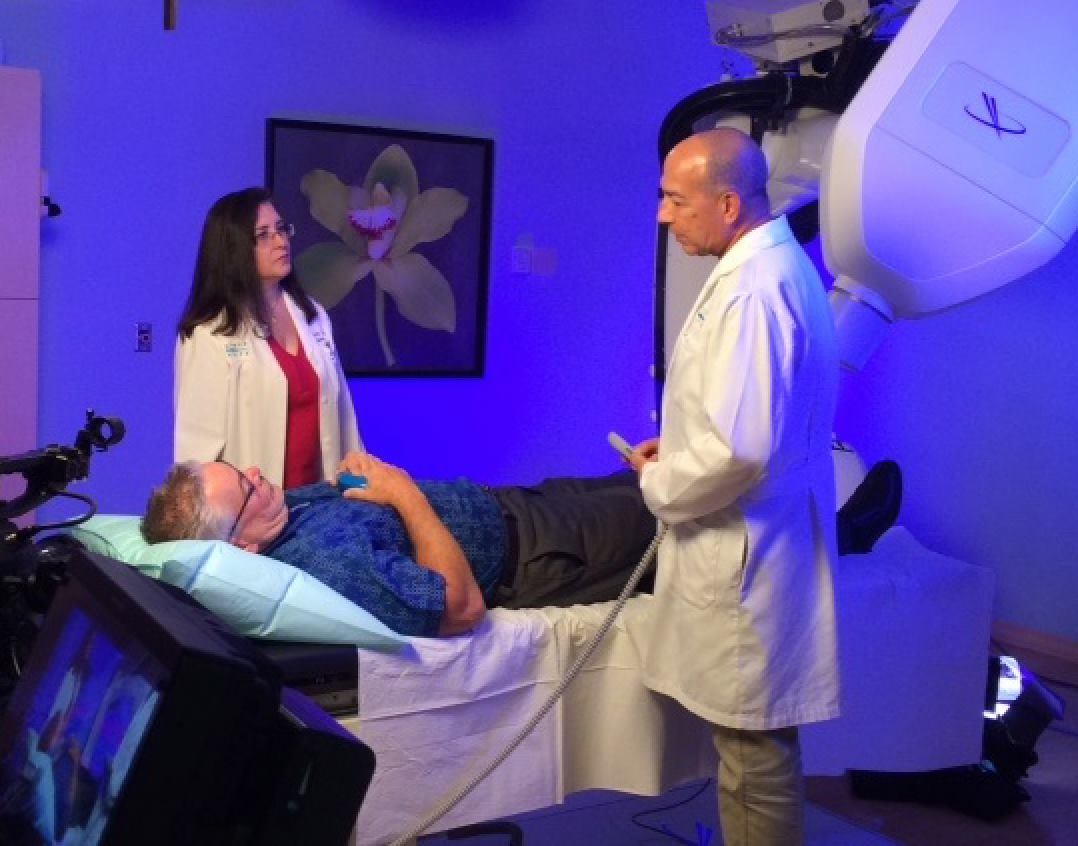Shortening a traditional 45-day course of radiation therapy to 5 days of stereotactic body radiotherapy (SBRT) for patients with advanced, high-risk prostate cancer is safe and effective, a study from the UCLA Jonsson Comprehensive Cancer Center found.
Previous research from UCLA showed that a short regimen of SBRT, which uses a higher dose of radiation than conventional methods, is a plausible treatment option in low- to moderate-risk prostate cancer patients. But the recent study, published in the International Journal of Radiation Oncology, Biology, Physics, aimed to assess the shortened radiation course’s efficacy in patients with high-risk disease.
Researchers analyzed a cohort of 344 men with high-risk prostate cancer who were enrolled in clinical trials at 7 institutions. Minimum follow-up time was 24 months, and 72% of patients received androgen deprivation therapy (ADT) for a median duration of 9 months.
Biochemical recurrence-free survival (BCRFS) and distant metastasis-free survival (DMFS) were main end points. With a median follow-up of 49.5 months, the estimated 4-year BCRFS was 81.7% (95% CI, 77.2-86.5%). DMFS was 89.1% (95% CI, 85.3%-93.1%).
“These findings suggest that SBRT, which condenses radiation treatment for prostate cancer into as few as 4-5 sessions (as compared with 20-45 sessions previously), is safe and effective in a broad setting for patients with high-risk prostate cancer,” Amar U. Kishan, MD, an assistant professor of radiation oncology at the David Geffen School of Medicine at UCLA, researcher at the UCLA Jonsson Comprehensive Cancer Center, and lead study author told OncLive. “This has previously been shown in patients with low- and intermediate-risk prostate cancer but extending these findings to [those with] high-risk prostate cancer broadens applicability [of this approach].”
Severe side effects were rare, with 2.3% of patients experiencing grade 3 or higher genitourinary toxicity and 0.9% of patients experiencing gastrointestinal toxicity.
“These data support a favorable toxicity and efficacy profile for SBRT for [high-risk prostate cancer],” the authors wrote. “Further prospective studies are needed to evaluate the optimal dose and target volume in the context of SBRT for [high-risk prostate cancer].”
The 2020 National Comprehensive Cancer Network guidelines provide that SBRT can be considered for patients who have social or medical hardships that would prevent them from undergoing the longer conventional radiation therapy regimen.
This study was limited in that it focused on single-arm, phase 2 studies and prospective registries and was non-randomized. Notably, findings from the ongoing, randomized, phase 3 PACE-C trial will further compare conventional radiotherapy to SBRT.
CyberKnife Miami has succesfully treated hundreds of men with prostate cancer. Call our radiation oncology team to find out if we can help you get cancer behind you as quickly, safely, effectively & easily as possible 305-279-2900.
References
1. Van Dams R, Jiang NY, Fuller DB, et al. Stereotactic body radiotherapy for high-risk localized carcinoma of the prostate (SHARP) consortium: analysis of 344 prospectively treated patients. Int. J. Radiat. Oncol. Biol. Phys. Published online January 22, 2021.
2. Marabella C. Shorter Course of SBRT Proves Safe, Effective in High-Risk Prostate Cancer. OncLive. Published online January 27, 2021.

